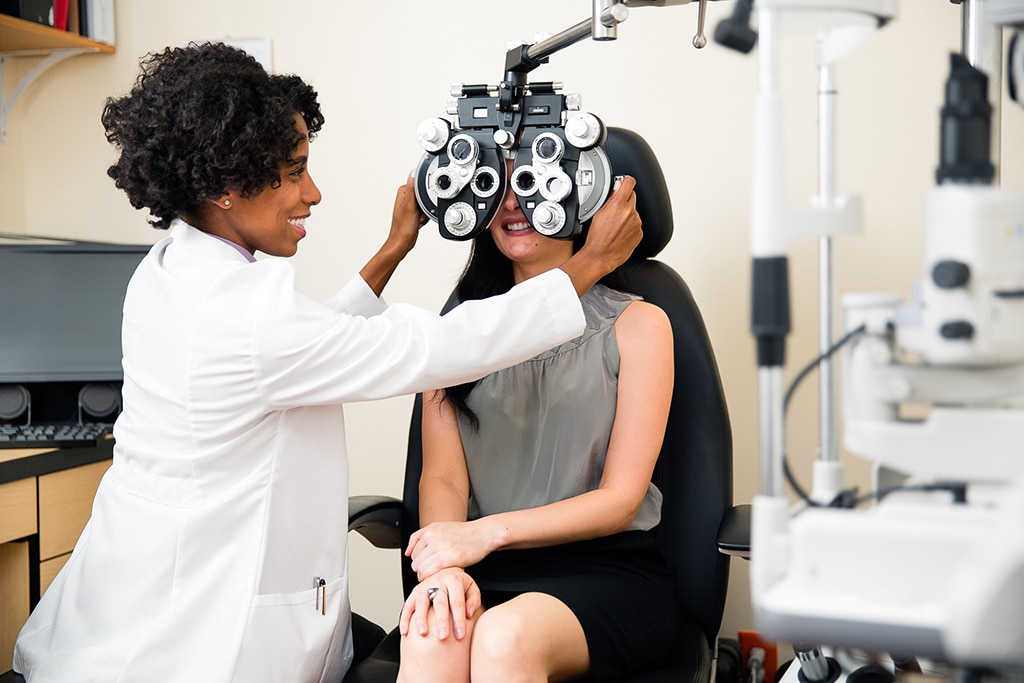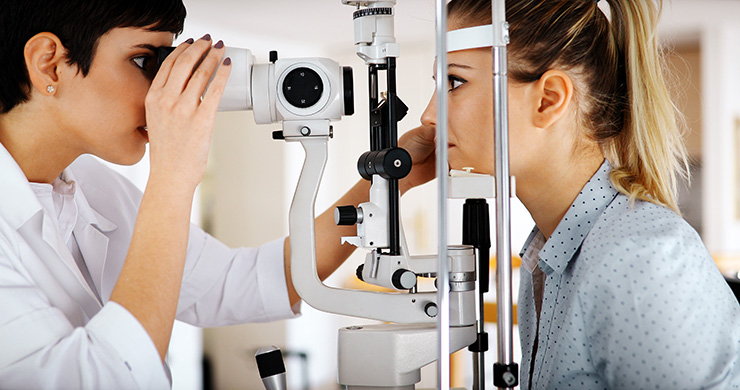Checking Out the current Technological Innovations in Optometry and What They Mean for Eye Doctors
From the precision of Optical Coherence Tomography to the nuanced insights used by AI-driven diagnostic devices, these advancements are establishing brand-new requirements in patient analysis and treatment. As these developments penetrate the practice, eye doctors are encountered with the obstacle of embracing these tools to improve patient end results.
Advancements in Diagnostic Devices
Progressing the field of optometry, technologies in diagnostic devices have reinvented the means eye care professionals analyze and detect visual disabilities and eye problems. The previous decade has experienced substantial technological improvements, making it possible for more precise and detailed evaluations. Optical Coherence Tomography (OCT), for instance, gives high-resolution cross-sectional pictures of the retina, permitting for the early discovery of illness such as glaucoma and age-related macular degeneration. This non-invasive imaging technique has actually ended up being crucial in contemporary optometric practice.
Another trick technology is the intro of sophisticated corneal topography systems, which map the surface curvature of the cornea with precision. These devices are particularly useful for suitable contact lenses and detecting corneal problems. In addition, digital retinal imaging has transformed typical ophthalmoscopy, supplying comprehensive, breathtaking views of the retina that promote thorough visual assessments.
The growth of wavefront aberrometry has also been crucial, enabling the analysis of refractive errors with unequaled accuracy (Opticore Optometry). This modern technology assists in customizing rehabilitative lenses and boosting medical end results for refractive surgical procedures. Collectively, these analysis innovations equip eye doctors to provide remarkable person care, ensuring very early intervention and customized treatment techniques, ultimately improving visual health results
AI in Individual Administration
Building on the foundation of cutting-edge analysis devices, the consolidation of artificial knowledge (AI) in person administration stands for a transformative jump for optometry. AI systems are increasingly utilized to boost efficiency, accuracy, and customization in patient treatment.
Moreover, AI-driven platforms help with structured patient interactions and administrative processes. Automated scheduling, virtual examinations, and individualized follow-up plans not just enhance patient complete satisfaction but additionally enhance time monitoring for professionals. These systems can triage clients based on the necessity of their conditions, making certain that those in essential need obtain punctual interest.
Moreover, AI enhances decision-making by providing optometrists with evidence-based suggestions and treatment pathways. By integrating data from digital health and wellness records, AI devices use insights that inform scientific choices, decreasing the danger of errors and improving person outcomes. As AI remains to advance, its function in individual monitoring will likely broaden, improving the landscape of optometric care.
Breakthroughs in Retinal Imaging
In the realm of optometry, retinal imaging has actually observed impressive technical developments that are improving diagnostic capacities and person care. Developments such as Optical Comprehensibility Tomography (OCT) and fundus digital photography have reinvented how eye doctors assess the retina and imagine.
Enhanced imaging techniques like OCT angiography are further refining analysis precision. Eye Doctor. Such improvements facilitate the recognition of minute retinal adjustments that might signify condition development.
In addition, improvements in synthetic intelligence are enhancing retinal imaging by allowing automated evaluation of large datasets. These systems help optometrists in identifying patterns a sign of pathology, consequently enhancing diagnostic precision and performance. Jointly, these innovations are changing retinal imaging right into a keystone of modern-day eye care, improving outcomes and increasing restorative opportunities.
Teleoptometry's Growing Duty
Teleoptometry is increasingly ending up being a vital component of eye treatment, driven by developments in digital communication and diagnostic devices. As optometry welcomes electronic makeover, teleoptometry assists in remote examinations, allowing eye doctors to extend their solutions beyond conventional boundaries. This is particularly helpful in rural and underserved areas where access to specialized eye treatment is commonly minimal. By leveraging high-resolution video conferencing and progressed retinal imaging, optometrists can conduct detailed eye exams from afar, guaranteeing prompt diagnosis and get redirected here therapy.
The integration of expert system (AI) additional enhances teleoptometry, enabling the analysis of visual data and helping in the detection of eye problems such as glaucoma and diabetic retinopathy. AI-powered algorithms can swiftly interpret complex imaging data, offering eye doctors with beneficial insights that reinforce medical decision-making.
Additionally, teleoptometry supports continuity of treatment with seamless assimilation with digital health and wellness documents (EHRs), permitting eye doctors to keep comprehensive client histories. When consulting with different experts., this makes sure that people receive customized and regular treatment even.
In spite of these benefits, challenges stay, including ensuring information security and managing client assumptions. Teleoptometry stands for a substantial stride in the direction of even more obtainable, reliable, and patient-centered eye care. As innovation develops, its duty is positioned to expand further.

Future Fads in Eye Treatment
A myriad of cutting-edge trends is set to improve the future of eye treatment, driven by technological advancements and the advancing demands of individuals. One substantial pattern is the combination of expert system (AI) in diagnostics, which assures to improve the accuracy and performance of eye evaluations. AI formulas can assess substantial amounts of information from retinal images, possibly finding conditions like diabetic retinopathy and glaucoma earlier than standard approaches.
Furthermore, personalized medicine is gaining traction in optometry, with genetic screening notifying tailored treatment plans. This method intends to optimize client outcomes by tailoring interventions to private genetic accounts. Wearable innovation, such as smart call lenses, is also coming up, providing real-time monitoring of intraocular stress or sugar levels, thus offering continual insights into ocular and systemic wellness.
The adoption of increased reality (AR) and virtual truth (VR) in training and person education and learning is an additional emerging fad. These technologies offer immersive experiences that can improve understanding and skills both for eye doctors and patients. As these patterns develop, eye doctors have to stay abreast of technical improvements to provide innovative treatment, ensuring enhanced client results and complete satisfaction in the dynamic landscape of eye care.
Final Thought

Jointly, these analysis innovations equip eye doctors to provide superior person care, ensuring very early intervention and customized therapy techniques, ultimately improving visual health outcomes.

As these technologies continue to progress, index optometrists need to adapt and integrate them right into technique, ultimately maximizing operations efficiency and boosting the requirement of eye treatment supplied to individuals.